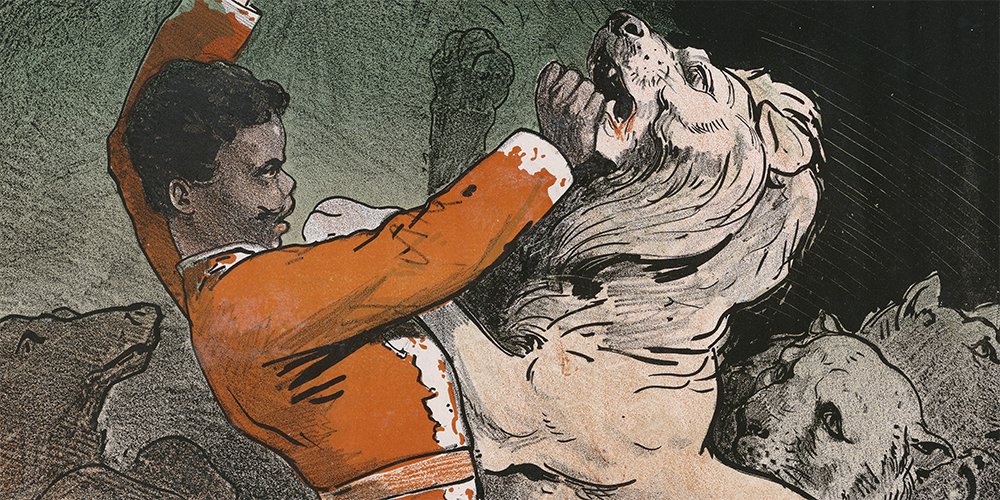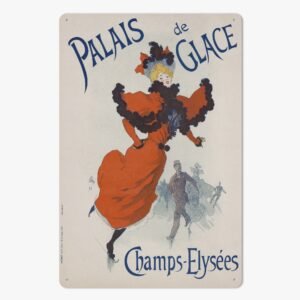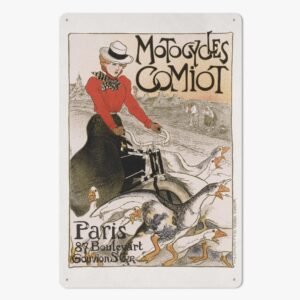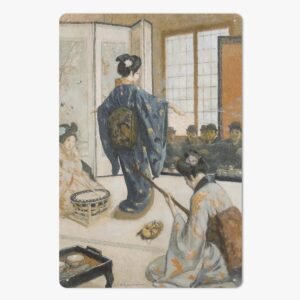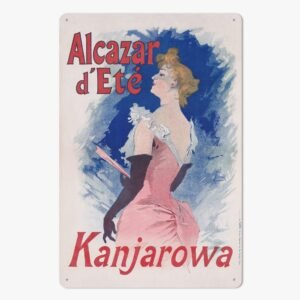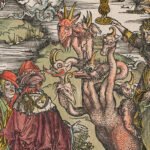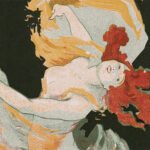The Belle Époque (French for “Beautiful Era”) was a period of cultural flourishing and optimism that swept across Europe, particularly France, between 1871 and 1914. This golden age of peace, prosperity, and innovation gave rise to some of the most exquisite and expressive art ever created. Characterized by its grace, opulence, and celebration of modern life, Belle Époque art bridged the gap between tradition and the avant-garde, leaving a visual legacy still adored today.
What Defines Belle Époque Art?
Belle Époque art is more than a style, it’s an atmosphere. It captured the energy of a time when cities buzzed with electricity, cabarets lit up the night, and the world seemed full of promise. Artists of the era embraced flowing lines, decorative patterns, romantic subjects, and a love of beauty in both everyday life and the theatrical.
This art flourished in posters, magazine covers, interior design, painting, fashion illustration, and decorative arts. Though it often overlaps with Art Nouveau, Belle Époque encompasses a broader range of styles, including the realist and impressionist works that dominated fine art salons.
Masters of the Belle Époque
Here are five renowned artists whose work embodies the elegance and spirit of the Belle Époque, each contributing through distinct but overlapping artistic styles:
-
Jules Chéret – Poster Art & Rococo Revival : Known as the father of the modern poster, Chéret’s vibrant lithographs brought art to the streets of Paris. His flowing compositions and joyful female figures laid the foundation for the graphic elegance that would later define Art Nouveau.
-
Alphonse Mucha – Art Nouveau : While Mucha is celebrated as a central figure in Art Nouveau, his rise to fame happened squarely within the Belle Époque. His theatrical posters—especially for actress Sarah Bernhardt—combined decorative borders, organic lines, and ethereal female figures, capturing the ornamental spirit of the time.
-
Henri de Toulouse-Lautrec – Post-Impressionism / Art Nouveau Adjacent : Toulouse-Lautrec chronicled the bohemian nightlife of Montmartre with expressive linework and bold flat colors. His posters and illustrations blurred the lines between fine art and commercial design, helping to shape the emerging visual culture of the Belle Époque.
-
Théophile Steinlen – Realism & Poster Art : Best known for his iconic Le Chat Noir poster, Steinlen brought warmth and empathy to scenes of working-class Paris. His style merged decorative poster aesthetics with a realist’s eye, often using cats, cabaret performers, and street life as central motifs.
-
Georges Barbier – Fashion Illustration & Early Art Deco : At the tail end of the Belle Époque, Barbier’s fashion illustrations reflected an opulent, ornamental sensibility that bridged Art Nouveau and the emerging Art Deco style. His refined, theatrical compositions captured the elegance and whimsy of the era.
A Lasting Impression
The Belle Époque came to an abrupt end with the start of World War I, but its visual language lives on. Its blend of romance, opulence, and artistic freedom continues to enchant collectors, historians, and design lovers alike. Whether it’s a nostalgic poster, a detailed fashion plate, or a theatrical lithograph, Belle Époque artwork adds a timeless charm to any interior.Discover the Magic of the Belle Époque
Browse below to explore a handpicked selection of Belle Époque prints—perfect for decorating your home, studio, or boutique with the refined spirit of a truly beautiful era.

